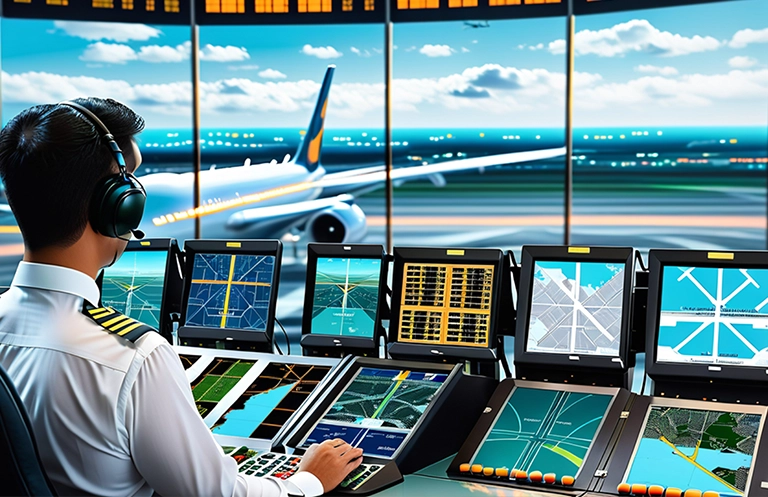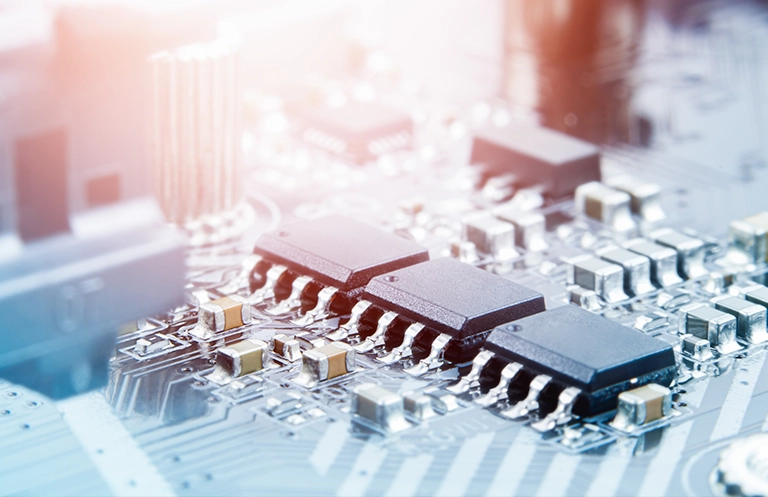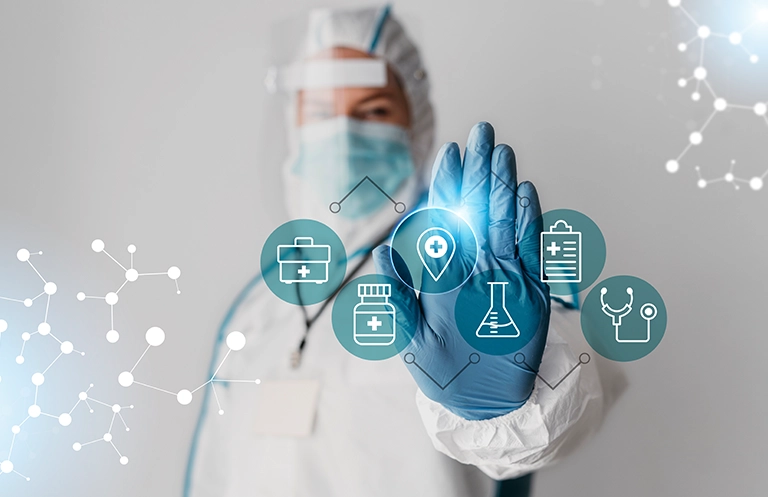The future of medical imaging: beyond CT scans
The traditional medical imaging systems primarily include scanning device sensors. But, today, the industry has moved towards AI-based solutions. Because of modern 3D visualization tools, imaging software solutions, AR/VR, the advancement of medical imaging technology is unaffectedly limitless. These digital technologies help with better image compression and faster results. In addition, cloud technologies play a role in storing medical data. Like other industries, the healthcare sector is moving forward in adopting the best technologies that are available.
Artificial intelligence is additionally liable for breakthroughs in in diagnosis, highlighting suspicious findings and identifying potential problem areas that normally go unnoticed. With high-resolution imagery and algorithmic support, doctors can now see details that would normally be difficult to detect.
Technologies reshaping the medical imaging sector
Cloud Technology
For raw data management in the medical imaging field, cloud computing is advantageous.
Based on the type of medical imaging solutions and the development level of the industry, cloud technologies are applicable for different scenarios.
- Cloud image archiving, storage of massive image data, medical image disaster-recovery done remotely
- Cloud image-based software applications, like 3D healthcare image applications, imaging centers, and mobile image reading
- Surgery live broadcast
- Remote health monitoring and image-based online consultation
Cloud-based solutions are helpful for radiologists to identify concerns and understand diseases.
3D imaging
The modern technology in 3D visualization produces high-quality images with multi-dimensional visualization. It comprises different scanning layers and turns out a versatile image. The potential to visualize 3D images have several applications.
For instance, some parts of our body need a precise analysis. That is why several imaging layers may be necessary to ensure a proper assessment. 3-dimensional cinematic rendering involves MRI and CT scanning process with volumetric visualization. The use of 3D imaging technologies for the scan helps in diagnosing tumors and soft tissues.
In the tomosynthesis field also, there is a shift from conventional 2D mammography. Radiologists capture images from different angles and check tissues thoroughly. They can view things using the 3D data set. Moreover, 3D ultrasound technologists can capture better images before approaching radiologists. Furthermore, the effect of 3D visualization technologies on CT angiography enables clinicians to check hemorrhages and aneurysms.
Peripheral pointing devices can interact with the 3D image. The image can be rotated and cut into cross-sections by medical specialists. It is used for better visualization and planning before the procedure. Doctors can even print these images with a 3D printer.
AR/VR
While using radiology processing tools, the integration of AR/VR technologies provides better digital content. AR/VR-enabled imaging makes communication easy and results in better patient care processes.
Moreover, there is increasing use of head mounted devices in recent years. AR/VR devices present an intuitive control and interface. For instance, physicians may now construct a 3D image of an MRI using AR technologies. They can then use 3D glasses or a virtual reality headset to study the image. Advanced head-mounted gadgets detect head motion while facilitating virtual imagery. Thus, AR/VR technology enables radiologists to get anatomical details on a virtual surface. 3D images produced by AR/VR technology can be rotated and zoomed in for a better view.
For instance, the pre-surgical planning system based on AR makes use of a virtual tool. The tool presents a 3D hologram on the body of the patient. In turn, this allows the surgeons to locate the targets easily and quickly.
Artificial intelligence
AI serves to be one of the most promising tools for boosting the medical imaging industry. The global AI in the medical diagnostics market is projected to reach USD 3,868 million by 2025 from USD 505 million in 2020, at a CAGR of 50.2% during the forecast period.
Radiologists can speed up the examination process using AI. By processing multiple scans simultaneously, ML technology can find patterns that help make decisions faster. In addition, with the help of AI-enabled software, critical data from Radiology Information System (RIS) and Picture Archiving and Communication System (PACS) can be generated, reported, and analyzed.
To assist medical professionals in treating patients, edge computing with a GPU improves image quality, speeds up image generation, and performs image analysis. Signals can be converted into 2D or 3D images using NVIDIA and Qualcomm platform developments in GPU technology, which requires a series of complicated computations. GPU computing can accelerate and improve medical imaging to help medical professionals make better and faster decisions.
As of June 2020, according to a new report from the team at Johns Hopkins Medicine, AI demonstrates its ability to map chest X-ray and use large amounts of data to quickly find solutions to detect, prevent, and treat COVID-19. The team also found that AI could help improve risk classification by ranking patients according to the type of treatment they are receiving for COVID-19 infection. Additionally, the National Institutes of Health (NIH) launched the Medical Imaging and Data Center (MIDRC) in August 2020, which uses AI and medical imaging technology to improve the detection and treatment of COVID-19.
Digital twins
As per the term ‘digital twin technology,’ it is implied the creation of 3D visualization of some subject for examining how a particular treatment or therapy might affect the tissues, tumor, or some organ without actually testing the same on a patient. This enables clinicians to test essential adjustments and treatments before putting them into practice on patients. To date, it has proven to be a good testing environment that has helped improve the accuracy of diagnosis and predict the effectiveness of treatment, similar to AI technology.
Wrapping Up!
At eInfochips, we have 25+ years of strong product engineering expertise in designing, developing, deploying, and managing FDA Class II, III devices for health monitoring, diagnostics (imaging and non-imaging), and telemedicine applications. Leveraging our strategic partnerships with NVIDIA, NXP, Qualcomm, Azure, AWS, and strong expertise in building next-gen AI solutions, we offer turnkey R&D, project-based consulting, implementation, and resource augmentation services. We help our healthcare customers to expand their technology landscape with product engineering services such as design consulting (optics/ sensor, ISP/ SoC selection), image tuning (leveraging in-house lab, CoE), 3D visualization, high-performance computing enablement in medical imaging.
For more information on medical imaging technology, get in touch with our experts today.













